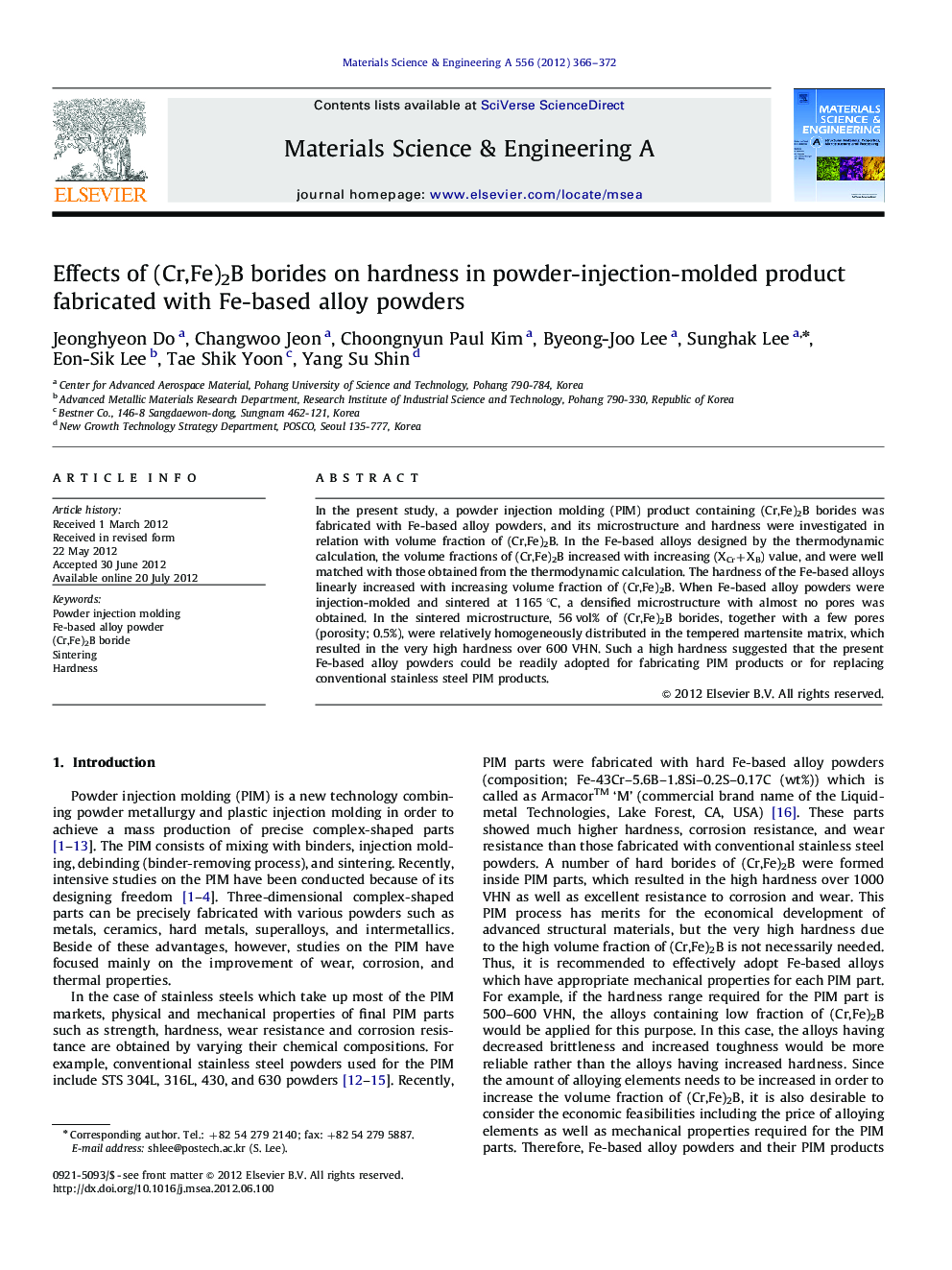| Article ID | Journal | Published Year | Pages | File Type |
|---|---|---|---|---|
| 1577066 | Materials Science and Engineering: A | 2012 | 7 Pages |
In the present study, a powder injection molding (PIM) product containing (Cr,Fe)2B borides was fabricated with Fe-based alloy powders, and its microstructure and hardness were investigated in relation with volume fraction of (Cr,Fe)2B. In the Fe-based alloys designed by the thermodynamic calculation, the volume fractions of (Cr,Fe)2B increased with increasing (XCr+XB) value, and were well matched with those obtained from the thermodynamic calculation. The hardness of the Fe-based alloys linearly increased with increasing volume fraction of (Cr,Fe)2B. When Fe-based alloy powders were injection-molded and sintered at 1165 °C, a densified microstructure with almost no pores was obtained. In the sintered microstructure, 56 vol% of (Cr,Fe)2B borides, together with a few pores (porosity; 0.5%), were relatively homogeneously distributed in the tempered martensite matrix, which resulted in the very high hardness over 600 VHN. Such a high hardness suggested that the present Fe-based alloy powders could be readily adopted for fabricating PIM products or for replacing conventional stainless steel PIM products.
